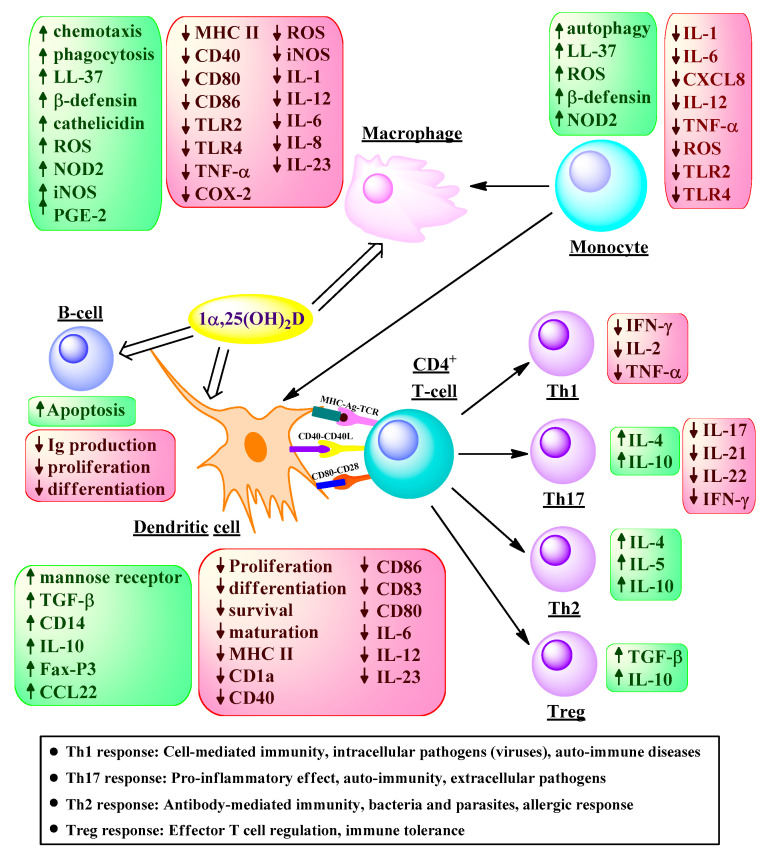Figure 4.
Mechanisms for adaptive immune responses to 1α,25(OH)2D. Monocytes produce more LL-37 and β-defensin, enhance autophagy and NOD2 (nucleotide‑binding oligomerization domain‑containing protein 2) expression, decrease the production of inflammatory cytokines and downregulate TLR2/4 expression. Differentiation into macrophages is increased; the chemotactic and phagocytotic responses of macrophages and the production of antimicrobial proteins such as cathelicidin are upregulated. However, the stimulatory capacity of the antigen-presenting cells (APCs) and T cells is decreased. At the level of the APC, 1α,25(OH)2D inhibits the differentiation into DCs, and thus stimulates effector CD4+ cells to differentiate into one of the four types of Th cells. Activated T cells also express VDR. 1α,25(OH)2D inhibits the development of Th1 cells associated with the cellular immune response, and promotes Th2 cells associated with humoral (antibody) mediated immunity, thereby indirectly promoting the T cell shift from a Th1 towards a Th2 phenotype. 1α,25(OH)2D also inhibits the development of Th17 cells, which play an essential role in combating certain pathogens and are linked to tissue damage and inflammation. Moreover, 1α,25(OH)2D favors Treg cell development via modulating DCs and by directly targeting T cells. Finally, B cells are also affected by 1α,25(OH)2D, demonstrating decreased immunoglobulin production, proliferation and differentiation, but increased apoptosis.

